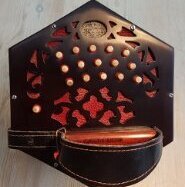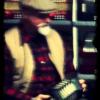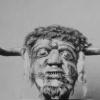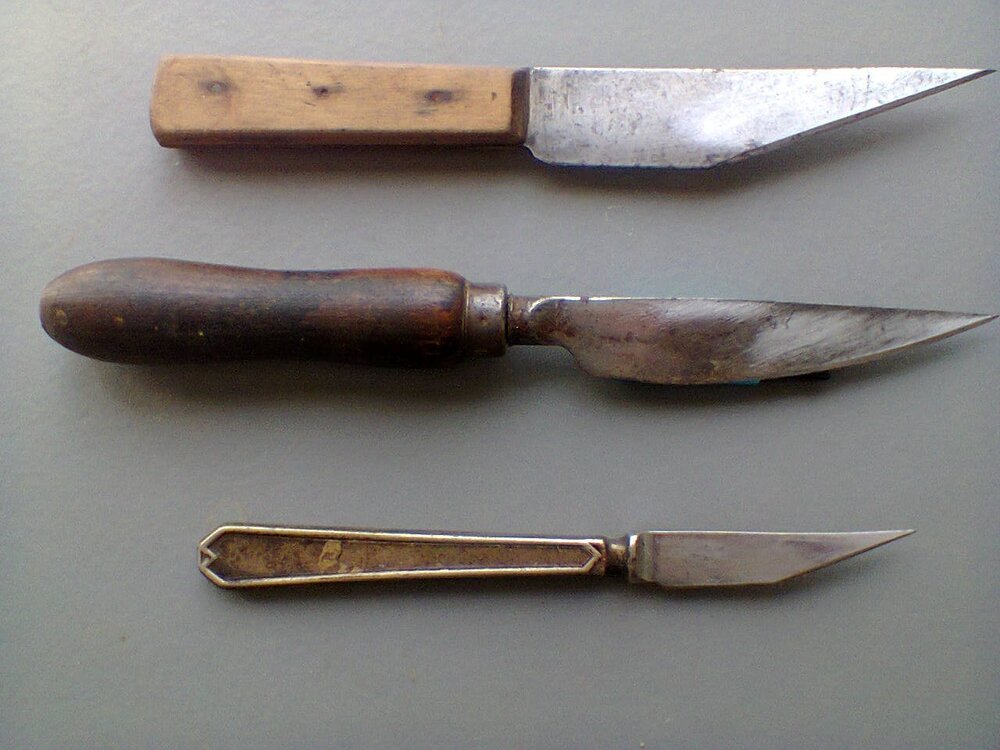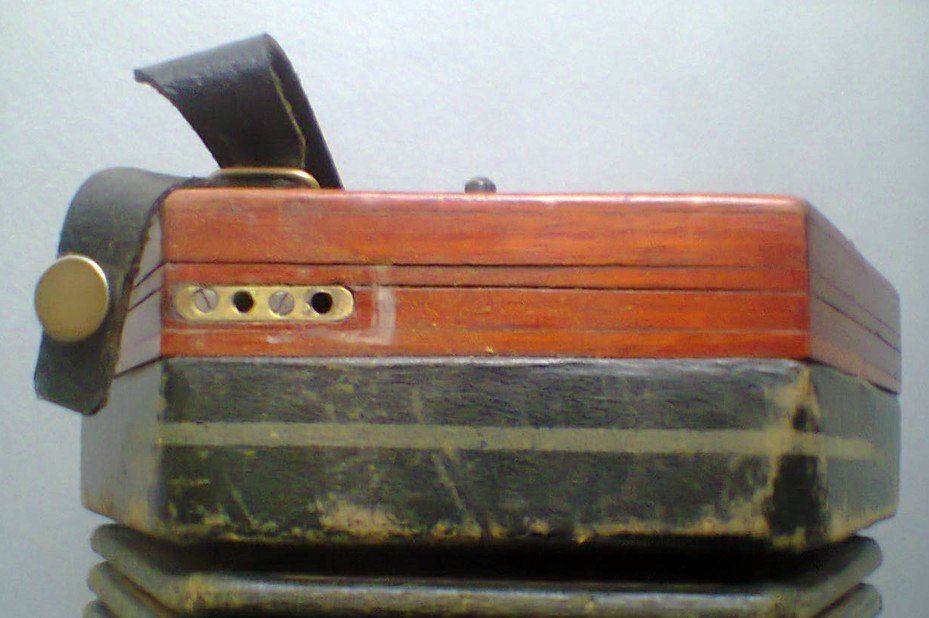-
Posts
665 -
Joined
About Geoffrey Crabb
- Birthday 10/21/1945
Profile Information
-
Gender
Male
-
Interests
Last surviving member of the Crabb family to have made concertinas. General interest in the furtherance of the instrument in all forms but with a preference in the manufacture more than the history.
Although I do not consider myself a 'player' I do favour the Crane duet and the 40 Key Anglo.
I can date Crabb Instruments back to 1895 and give a fairly good estimate for dates before that. -
Location
Bishop's Stortford, Hertfordshire, England
Recent Profile Visitors
Geoffrey Crabb's Achievements

Heavyweight Boxer (5/6)
-
Thanks for that Wes Geoff
-
Very nice, thank you Matt Geoff
- 10 replies
-
- instrumental arrangement
- treble concertina
-
(and 1 more)
Tagged with:
-

Advice for thickness of leather for bellows
Geoffrey Crabb replied to Rod Pearce's topic in Instrument Construction & Repair
-
Just a thought, Before and around the the turn of 1900, many Anglo’s, being considerably less costly to purchase than the English, were bought collectively by rural communities to accompany song or dance gatherings. As, possibly, the only other music that might be heard and sung to, by some communities, may have been that of the local church/chapel organ. It is known that the pitch of pipe organs of the period was not very stable e.g. due to temperature etc. , sometimes being considerably lower than the accepted, and this may have influenced congregations/communities to adjust and establish their singing pitch to match that of their local organ. Possibly, to meet what could be seen as a ready market, the Bb/F & B/F# was produced to meet that requirement. Attached, a breakdown of 117 Anglo’s made in the Crabb workshop between Sept 1889 & Dec 1891. It can be seen how popular the B/F# was. Crabb Anglos Sep 1889 -Dec 1891 - Copy.docx
-

Kurt Braun's Passing
Geoffrey Crabb replied to saguaro_squeezer's topic in General Concertina Discussion
Thanks Rod, very sad to hear this. Although I never met Kurt, we had built up a certain affinity through my dads concertina (10555) that he acquired in December 1988. I was grateful that it had gone to a dedicated player who had preserved and played it for a further 36 years. I shall miss our occasional correspondence as will those, I am sure, who benefited from his encouragement and, of course, the entertainment he provided, so expertly, on the concertina. RIP Kurt -
Thank you Gregor, great, certainly brightened up a dreary day here.
-

Double-extended EC what would you call it?
Geoffrey Crabb replied to Matthew Heumann's topic in General Concertina Discussion
Of course, everybody is entitled to their own thoughts. Certainly when ‘Wheatstone’ included a 48k (C3-F6) in their English range it was listed within the Tenor-Treble section of their pricelists (circa 1931 on). Later, ‘48 Tenor’ became standard. I have no personal objection to ‘48K Tenor- Treble’ being used, if the range (C3- F6) is included and recognized universally. With respect, I’m not sure what you mean by true? tenor. Some alternative 48's with C3-F6 range were made 'to customer requirement' where the thumb strap and finger plate aligned with the F3 (left) and D3 (right) rows. Unfortunately, these were not popular to the used market due to this arrangement. Geoff -

Double-extended EC what would you call it?
Geoffrey Crabb replied to Matthew Heumann's topic in General Concertina Discussion
Mathew and all, Bit late to this, Many descriptions for English concertinas, mostly confusing, have been used over the years but the convention adopted by past makers has been, besides shape, finish etc. Number of keys (buttons) / Lowest to highest ranges included. Therefore, the instrument under discussion would be, as suggested, a 64b Tenor- Treble. One thing that I think would be advantageous is adding the actual range in the description of other instruments i.e. 56b Treble Range G3- G6 However, I have attached some info regarding descriptions and layouts, that some might find useful, or not. English Desciptions.doc Geoff -

scatesconcertinas.com
Geoffrey Crabb replied to Chris Flint's topic in General Concertina Discussion
Thanks Wes Geoff -
Hi Al, £125 may have been a lot then but I think you'll agree, besides surviving, it was good investment and one you have had 40+ years hands on use of. Take care Geoff
-
Jim, one would be hard pressed to find an original concertina one, adapting may have to be the answer. Picture of Music clip anchor in Salvation Army instrument
-
In response to a request, pictures attached of typical music book clip as fitted to concertinas of bands when marching etc. Music Book Clip.docx Geoff
-
Your welcome Alex. Happy New Year Geoff
-
Hi Alex, I would accept that it is of Crabb manufacture and the date as Stephen has said. Fretwork patterns can sometimes cause confusion in Identifying a make. It was not uncommon among makers for the piercing work and indeed, the design, to be outsourced to those engaged in that trade. That is why some fretwork similarities appear on instruments of different make. The bellows paper used was readily available at the time, and the steel lever wire lessened the end price to £2-0-0.complete with black case. For the benefit of yourself and others, I have attached the latest updated version of my Crabb dating document. You will see that I have added 8115. I have also emended my Email address. Crabb Dating Doc as at 06.01.2024.docx


